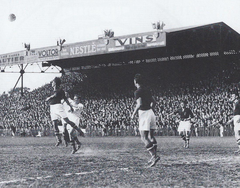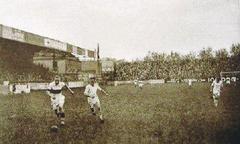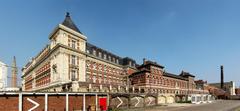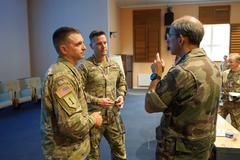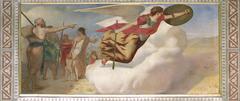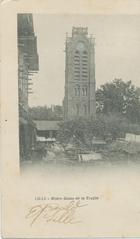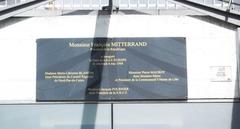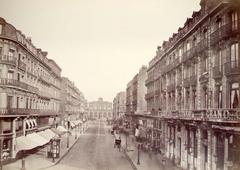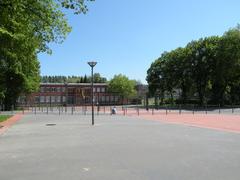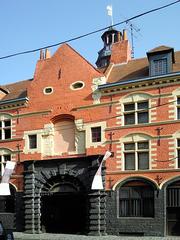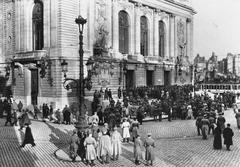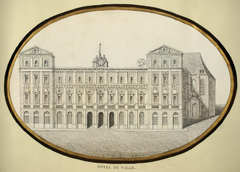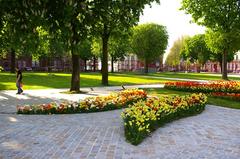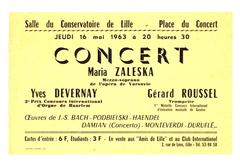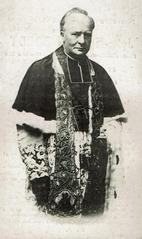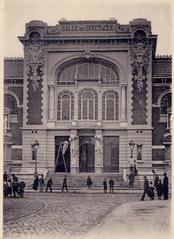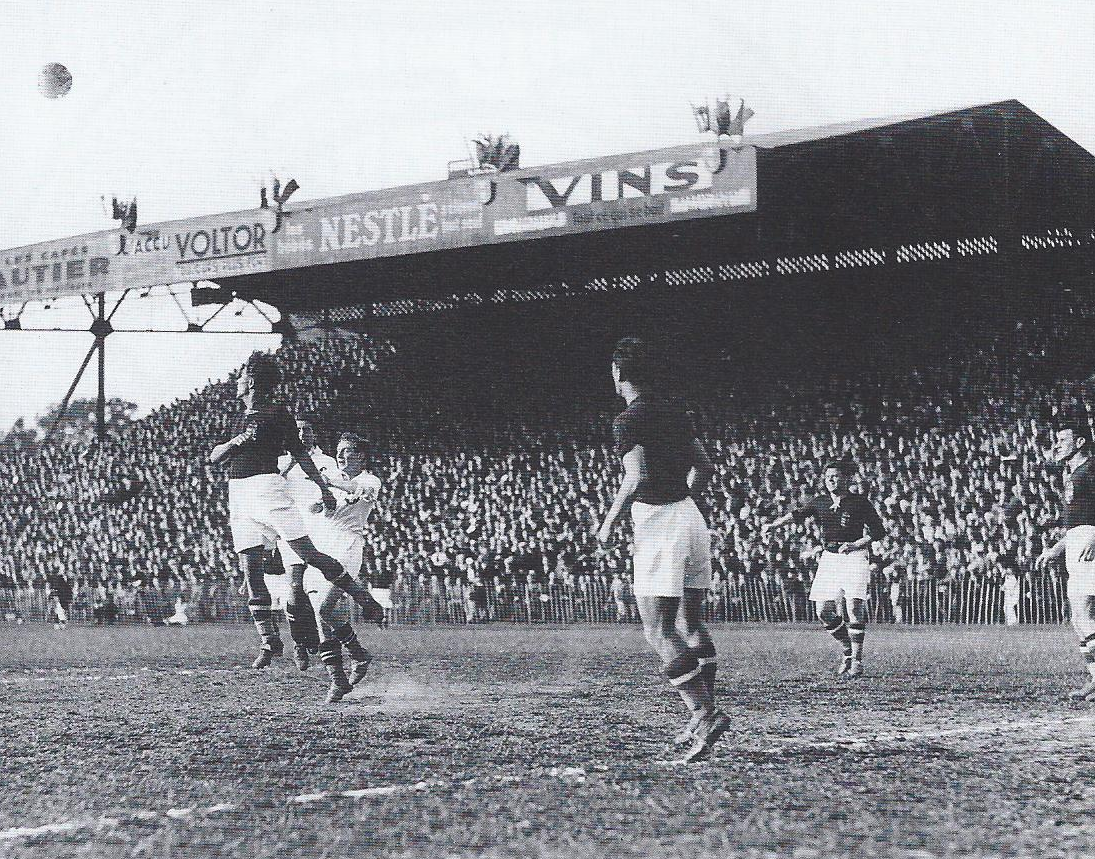
Stade Victor Boucquey Lille: Visiting Hours, Tickets, and Historical Guide
Date: 15/06/2025
Introduction: Lille’s Historic Football Landmark
Stade Victor Boucquey, a former cornerstone of Lille’s vibrant football heritage, stands as a testament to the city’s deep-rooted passion for sport. Opened in 1902 and initially known as the Terrain de l’avenue de Dunkerque, this iconic venue witnessed crucial moments in local and national football history, serving as the home ground for Olympique Lillois and, later, Lille Olympique Sporting Club (LOSC). The stadium’s legacy includes hosting the France national team’s first match outside Paris in 1914 and a quarter-final of the 1938 FIFA World Cup. Though demolished in 1975, its spirit lives on through Lille’s ongoing football culture, commemorative sites, and modern sporting complexes.
This definitive guide details Stade Victor Boucquey’s historical significance, practical visitor information—such as hours, tickets, and accessibility—nearby attractions, and tips for exploring Lille’s enduring football heritage. Whether you are a football fan, a history enthusiast, or a traveler intrigued by Lille’s cultural landscape, this resource offers a comprehensive look into one of France’s most storied sporting sites (Good Morning Lille; pss-archi.eu; Lille Tourism).
Table of Contents
- Introduction
- Origins and Early Years (1902–1907)
- Evolution and Club Transformations (1907–1943)
- International Recognition: The 1938 FIFA World Cup
- Wartime Renaming and the Henri-Jooris Era (1943–1944)
- The 1946 Roof Collapse and Safety Renovations
- Final Years, Closure, and Demolition (1949–1975)
- Lille’s Football Heritage Today
- Visiting Information: Hours, Tickets, Access, and Facilities
- Special Events, Tours, and Photo Opportunities
- Nearby Attractions
- Preservation and Future Developments
- Frequently Asked Questions (FAQ)
- Conclusion
- References
Origins and Early Years (1902–1907)
Stade Victor Boucquey opened in October 1902 as the Stade de l’avenue de Dunkerque, designed to serve Iris Club Lillois and later Olympique Lillois. Its initial 15,000-seat capacity and central location on avenue de Dunkerque made it a hub for sporting events and local gatherings. The stadium also hosted field hockey matches, reflecting Lille’s early multi-sport tradition (pss-archi.eu; zoomsurlille.fr).
Evolution and Club Transformations (1907–1943)
Following the 1907 merger of Iris Club Lillois and Olympique Lillois, the stadium was renamed in honor of Victor Boucquey, a respected vice-president of Olympique Lillois. The venue became synonymous with Lille’s football culture, hosting major fixtures and helping raise the city’s sporting profile in northern France (pss-archi.eu).
A defining moment came in 1914, when the stadium hosted France’s first national team match outside Paris—France’s 4-3 win over Belgium—marking a new chapter in the decentralization of French football (Good Morning Lille).
International Recognition: The 1938 FIFA World Cup
Stade Victor Boucquey’s international status peaked during the 1938 FIFA World Cup. On June 12, it hosted the quarter-final between Hungary and Switzerland, attracting a capacity crowd. This World Cup fixture, championed by Henri Jooris, not only placed Lille on the world football map but also showcased the city’s organizational capabilities (Football History; Good Morning Lille).
Wartime Renaming and the Henri-Jooris Era (1943–1944)
In August 1943, the stadium was renamed Stade Henri-Jooris, honoring the influential Ligue du Nord president and Olympique Lillois leader (zoomsurlille.fr; wikipedia). In 1944, Olympique Lillois and Sporting Club Fivois merged to form Lille OSC (LOSC), with the stadium serving as a key venue for the new club (pss-archi.eu).
The 1946 Roof Collapse and Safety Renovations
A tragic yet pivotal event occurred on February 17, 1946. During a derby between Lille and Lens, over 17,000 fans—exceeding the stadium’s official capacity—caused a roof collapse, injuring 53 people (Dicodusport; zoomsurlille.fr; wikipedia). The incident prompted significant renovations, culminating in the reopening of a safer, updated stadium in 1947.
Final Years, Closure, and Demolition (1949–1975)
Stade Henri-Jooris continued as LOSC’s home until the mid-1970s. Changing infrastructure standards and urban development led to its closure and demolition in 1975. The site made way for new urban projects, while Lille’s football legacy continued at successor venues, notably Stade Grimonprez-Jooris and the contemporary Stade Pierre-Mauroy (pss-archi.eu; ostadium.com).
Lille’s Football Heritage Today
Though the original stadium is gone, its legacy is preserved through:
- Stade Grimonprez-Jooris: Successor venue for LOSC and local events.
- LOSC Museum & Tours: Exhibits and guided tours chronicle the city’s football journey.
- Commemorative Plaques: Markers on the original site honor Victor Boucquey and the stadium’s role.
- Local Museums and Walking Tours: Sports museums and city tours offer further context (Lille Tourism).
Visiting Information: Hours, Tickets, Access, and Facilities
Site Location and Transport
- Address: Near the former avenue de Dunkerque site, central Lille.
- Metro: Closest station is Fives (Line 1); also served by bus lines 10 and 14 (Lille public transport).
- Cycling: V’Lille bike-share stations within walking distance.
Visiting Hours & Tickets
- Public Access: The modern sports complex on the historic site is open daily, 8:00 AM to 9:00 PM (hours may vary during holidays/weekends).
- Entry: Free for casual visitors; organized sport or group activities require advance booking (Lille City Sports).
- Guided Tours: Available seasonally via Lille Tourism.
Accessibility & Amenities
- Wheelchair-accessible paths and facilities.
- Locker rooms, restrooms, and bleacher seating.
- Landscaped green spaces and benches for relaxation.
Special Events, Tours, and Photo Opportunities
- Guided Tours: Book in advance through the city sports department for historical insights.
- Events: Community tournaments, festivals, and youth leagues take place regularly.
- Photo Spots: Commemorative plaques and green spaces offer excellent photographic opportunities.
Nearby Attractions
- Citadel of Lille: UNESCO-listed Vauban fortress.
- Parc de la Citadelle: Expansive urban park.
- Old Town (Vieux Lille): Renowned for Flemish architecture and lively shops/cafés.
- Parc Jean-Baptiste Lebas: Urban green space with gardens and playgrounds (Lonely Planet Lille Guide).
- Gare Saint Sauveur: Cultural center with exhibitions and events.
Preservation and Future Developments
While no major restoration is planned, Lille’s city council continues to support modest upgrades and community programming, ensuring Stade Victor Boucquey’s legacy endures as a hub for sports and recreation.
Frequently Asked Questions (FAQ)
Q: Can I visit the original Stade Victor Boucquey?
A: The original stadium was demolished in 1975, but the site now serves as a modern public sports complex with commemorative features.
Q: What are the visiting hours?
A: 8:00 AM to 9:00 PM daily; check for variations during weekends and holidays.
Q: Are tickets required?
A: Entry is free for casual visitors. Organized groups should reserve in advance.
Q: Are guided tours available?
A: Yes, by appointment through Lille’s sports department or tourism office.
Q: How do I get there?
A: Use the Fives metro station (Line 1), bus lines 10/14, or V’Lille bike-sharing.
Q: What else can I do nearby?
A: Enjoy the Citadel, Parc de la Citadelle, Old Town, and local museums.
Conclusion
Stade Victor Boucquey’s story is integral to Lille’s sporting and cultural identity. From pioneering football in the early 1900s to hosting World Cup fixtures and fostering local talent, its legacy resonates across generations. The modern complex and commemorative efforts ensure that visitors can still connect with this history—whether through tours, community events, or a stroll through the site’s green spaces.
For a deeper exploration of Lille’s football heritage, download the Audiala app for guided tours and exclusive content. Stay engaged with updates on events and heritage news by following us on social media.
References
- Stade Henri-Jooris: History and Legacy of Lille’s Iconic Football Stadium (Good Morning Lille)
- Stade Henri-Jooris Architectural Details (pss-archi.eu)
- Lille Tourism Official Site (Lille Tourism)
- The Crazy Tourist: Best Things in Lille (The Crazy Tourist)
- Lille City Sports & Lonely Planet (Lille City Sports, Lonely Planet Lille Guide)
- Dicodusport & World Soccer (Dicodusport, World Soccer)
